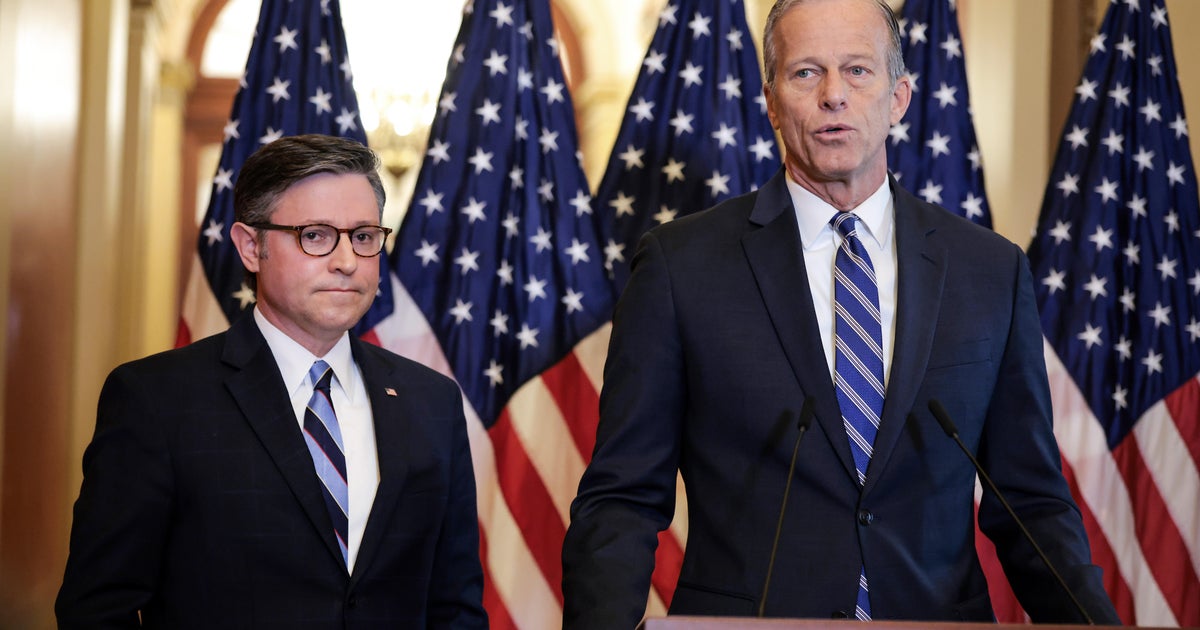
Washington — The House on Thursday adopted a budget blueprint for President Trump’s agenda after Republican leaders scrambled to convince GOP holdouts who want deeper spending cuts to back it.
The resolution was adopted in a 216-214 vote, with two Republicans — Reps. Thomas Massie of Kentucky and Victoria Spartz of Indiana — joining all Democrats to vote against it.
About a dozen House conservatives ultimately flipped their opposition after receiving assurances from leaders that the Senate would pursue $1.5 trillion in savings, at a minimum.
“Our two chambers are directly aligned,” House Speaker Mike Johnson, a Louisiana Republican, said before the vote. “We’re committed to finding at least $1.5 trillion in savings for the American people while also preserving our essential programs.”
Senate Majority Leader John Thune, a South Dakota Republican, echoed that the Senate is “aligned with the House in terms of what their budget resolution outlined in terms of savings.”
“The speaker talked about $1.5 trillion dollars. We have a lot of United States senators who believe that is a minimum,” Thune said.
The lower chamber was set to vote Wednesday evening on the budget resolution but punted after several House conservatives resisted increasing pressure from Mr. Trump to accept the blueprint that would open the door to implementing his border security, defense, energy priorities and extending expiring tax cuts.
Approving the budget plan in both chambers is the first step in the reconciliation process, which allows Congress to bypass the 60-vote threshold required to advance most legislation in the Senate and pass Mr. Trump’s agenda with a simple majority. Going that route allows Republicans, who have control of the House and Senate, to pass the measure without any support from Democrats.
The House and Senate worked on separate blueprints earlier this year but more recently reached a compromise resolution, which the Senate adopted early Saturday morning. Republican leaders in the House worked to unite their divided party behind the budget plan this week before Congress leaves town for a two-week recess.
The Senate set much lower minimum floors for spending cuts at just about $4 billion dollars, though committees could find far more. The compromise resolution also allows for the House to slash at least $1.5 trillion in spending.
The Senate also wants to account for tax cuts enacted during Mr. Trump’s first term with a tactic known as “current policy baseline,” which assumes that continuing expiring policies will cost nothing. Under that baseline, the nearly $4 trillion it would cost to extend the 2017 tax cuts would not be counted, further frustrating House conservatives.
Before backing the resolution, House conservatives wanted assurances from the Senate that there will be deeper spending cuts, which sent leadership scrambling to find another compromise.
“We just don’t trust the Senate,” Rep. Eric Burlison, a Missouri Republican, told reporters Wednesday night after fiscal hawks huddled with Johnson for more than hour as the vote was delayed. “We all campaign on spending cuts, but again and again, that doesn’t happen. And when the Senate sent over something that said $4 billion is their floor, that was unacceptable to a lot of us.”
Burlison was among those who changed their minds and voted in favor of the resolution.
Mr. Trump increased pressure on House Republicans in recent days to swallow the blueprint, telling holdouts on Tuesday night, “close your eyes and get there.” He added that individual lawmakers may not get “every little ounce” of what they want in the legislation.
“It’s a phenomenal bill. Stop grandstanding,” Mr. Trump said at the House GOP campaign arm’s fundraising dinner.
